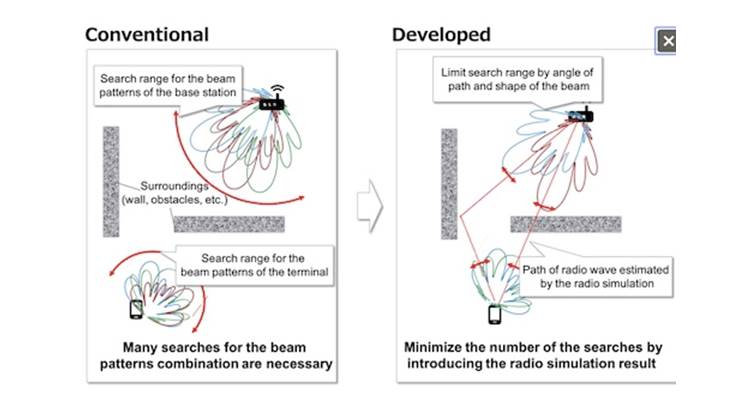Fujitsu Laboratories this week announced the development of new, high-speed computing technology to significantly streamline the deployment of wireless base stations compatible with 28 GHz millimeter-wave private 5G systems.
With its new technology, Fujitsu has successfully developed a high-speed algorithm that can automatically calculate the best placement for private 5G millimeter wave base stations 5 to 10 times faster than conventional approaches. The technology also accounts for the adjustment of parameters including transmission power, radio channel, antenna direction and position, which makes it easier for non-radio experts to determine layouts for wireless base stations for private 5G systems.
Going forward, Fujitsu will continue to advance its automated design technology and aims to leverage it in the area design of its private 5G system integration service within fiscal 2020. Fujitsu has previously developed an automatic wireless base station design technology that enables non-specialists to design and install wireless LAN networks in a day or so, instead of the previous seven-day work required by wireless experts, by using radio wave simulation technology that makes use of the knowledge of network technology we have accumulated over the years. However, the millimeter-wave band is more direct than microwaves of 6 GHz or less, which to date have been used mainly in cellular and wireless LANs. Therefore, the millimeter-wave band is easily affected by surrounding obstacles, and furthermore, the signal attenuation is large when the distance between the base station and the terminal increases. Therefore, by controlling the antenna with many antenna elements to perform beamforming, it is important to increase signal power and compensate for attenuation by directing radio waves to each terminal.In designing a private 5G system in the millimeter-wave band, the number of base stations required increases due to the attenuation characteristics of the millimeter-wave. Additionally, many combinations need to be explored to estimate the effect of beamforming, which greatly increases the amount of computation required for automatic wireless base station deployment. As a result, it may take more than one day for each high-precision simulation on a typical desktop PC in an office, etc., and shortening the calculation time remains a important challenge to overcome.




















